Last week I had to go to Amsterdam (The Netherlands) for my work and right after that I was going to drive to an aikido seminar in Stuttgart (Germany) for the weekend. Coming from Belgium, that meant that I had to drive 1600 km in 3 days. Actually, make that 1.5 days, because on Saturday and Sunday morning I was training hard while the car wasn’t moving at all.
So this seemed to me a perfect test for Tesla’s recently released AutoPilot feature. Now, I do call it AutoPilot, but actually it is a set of features that Tesla has been releasing gradually over the past year. Let me start by explaining what the system is and especially what it isn’t.
Autopilot is the software that makes use of the car’s front camera, the front radar, the GPS and 12 ultrasonic sensors that scan 360° around the car. Those capabilities combined give you a list of intersting and useful features. For those of you already familiar with Autopilot, you can continue reading here.
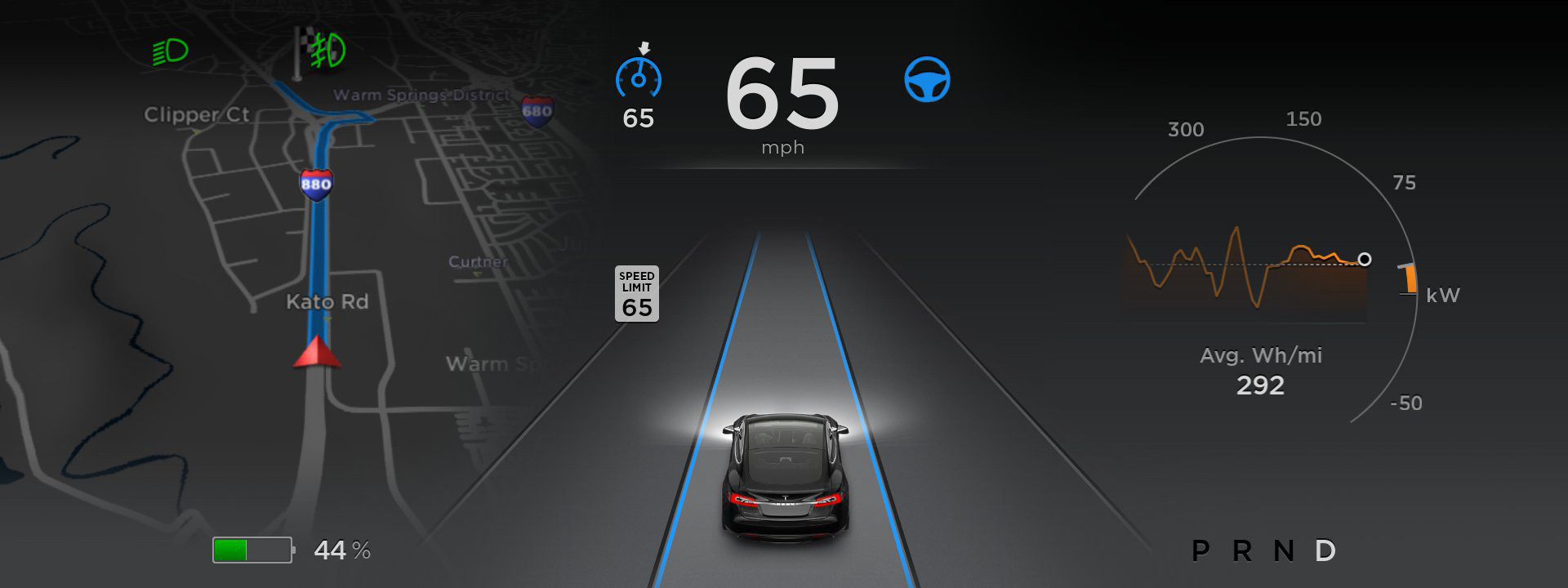
Tesla AutoPilot v7.0 DashBoard [Source: Tesla Motors]
TACC: Traffic Aware Cruise Control.
This is just another name for Adaptive Cruise Control or Radar Guided Cruise Control and it works just the same as in any other car that has the system. You set a specific speed the car needs to maintain, but if another car is in front of yours its radar makes you hold a set distance (selectable between 7 and 1, ranging from suite a distance, to full “BMW mode” 😉 ) If the car in front of you slows down, your car simply follows that move and keeps the same distance so you don’t run into it. It can even bring you to a complete stop if necessary and can do an emergency stop in case of a distracted driver, for example. A nice safety feature in the first place.
AutoPark
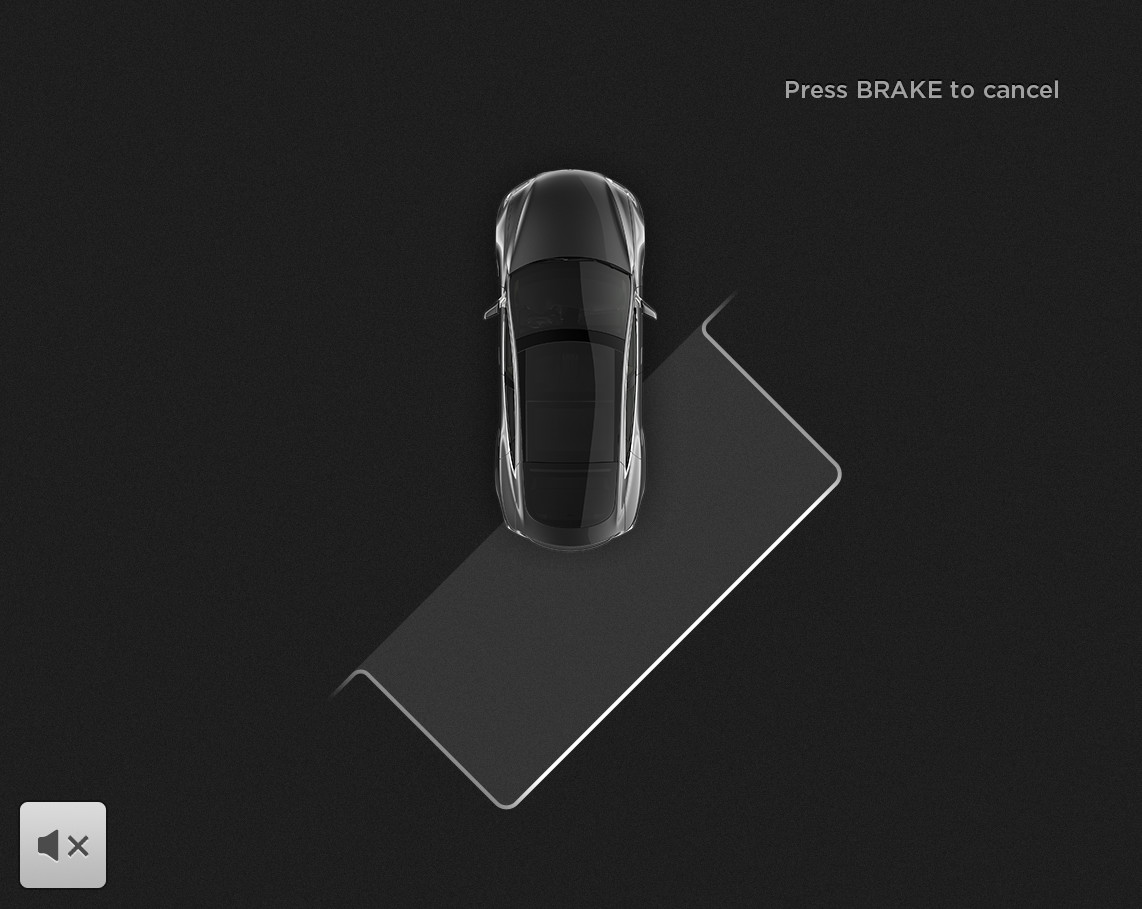
AutoPark in action [Source: Tesla Motors]
Again, this is a feature that works similarly to other cars that have had this capability for quite some time. So Tesla was kind of catching up to the others. But instead of simply catching up, tesla has leapfrogged the competition by taking it one step further. Like in most cars you drive by the parking spot and the car alerts you to an open position. Then you select reverse and that’s where the similarities end. With another car the car does the turning, but you have to accellerate and brake, put it in drive again and position the car in the parking space. In a Tesla, you simply hit a button on the massive center touchscreen and the car parks itself, controlling steering, gear and throttle all by itself, with you as a passive driver, only needing to intervene if something unexpected occurs.
AutoSteer (beta)
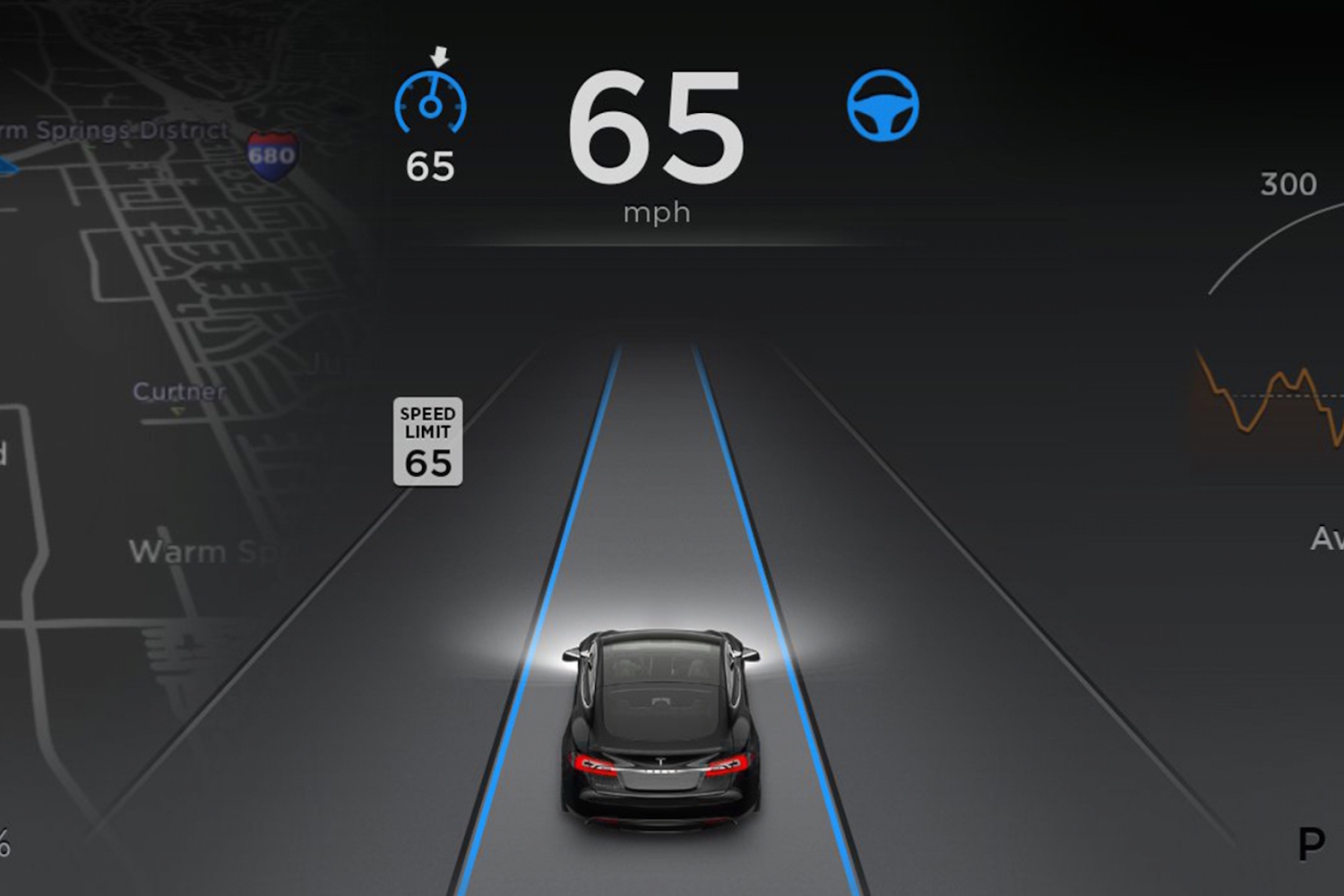
AutoSteer in action [Source: Tesla Motors]
At the time of writing this blog post auto steer is still in beta, but it is already an awesome feature and I can’t wait for the glitches to be resolved and the system improving even more. But for now, it looks a lot like the Lane Assist that you find on other cars to keep you in your lane. Mercedes has this traffic jam assist that drives the car all by itself at low speeds so,in traffic jams you are no longer burdened with constantly stopping and going. Tesla has the same capabilities, but again, that is where the similarities with existing systems ends. Tesla allows this capability to take over steering completely at higher speeds as well, up to 150kph even! There are some situations where it doesn’t work (well), but I’ll get to that in a minute.
Auto Lane Change
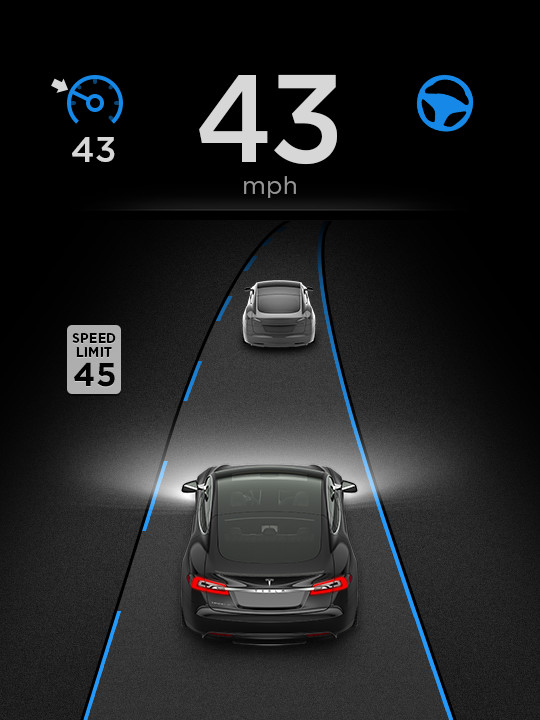
Auto Lane Change [Source: Tesla Motors]
The last main feature of the AutoPilot system is the ability of the car to change lanes all by itself, just by enabling the blinker. It works in both directions and when you activate it (only possible when AutoSteer is active) the car checks for you if it is safe to change lanes and when it is it changes 1 lane in the indicated direction. So for moving up 2 lanes, you need to activate it twice.
That sounds awesome, but how good is it really?
Well, it depends on a lot of things how good the system works. TACC works great in most cases, but when a car cuts you of, I find it reacts to slowly. Also, when a car comes in between you and the car in front but with enough room in between, it takes a good part of the car to be in your lane before it detects it and adjust the distance to follow the merging car.
I understand these are circumstances that the current hardware suite cannot detect. The radar has a rather narrow beam, focussed on long range capability instead of short and wide range. I might be msitaking, but the front camera has limited depth view because it is not stereoscopic. It does have depth information, but I assume not enough to account for such situations. So there lies one of the problems with the whole system: the current hardware suite is not sufficient to make it as good as it could be. But I’m sure the continuous improvement strategy from Tesla will fix that in the next hardware iteration of the cars.
Then we come to AutoPark. While it does go one step further than other brands, the proble is that currently it only works when you want to park in between 2 cars AND the car has to detect some kind of curb too. If there is only 1 car and you want to parallel park (because there is a pole on the othe side of the parking spot so you can drive in forwards, for example), the system doesn’t work. If the parking space has a bike lane behind it, so ther’s no curb, the system doesn’t work. That’s a shame, but again, I’m sure it will be updated in the future and my car will get a little bit better yet again.
I do still have issues with the Auto Lane Change feature in the sense that I don’t get it. Yes, it does perform an additional check before actually turning. But in Europe we got a different version of the software that needs you to firmly hold the steering wheel before it activates. So for me, I might as well do the lane change myself. For me, this provides little added value.
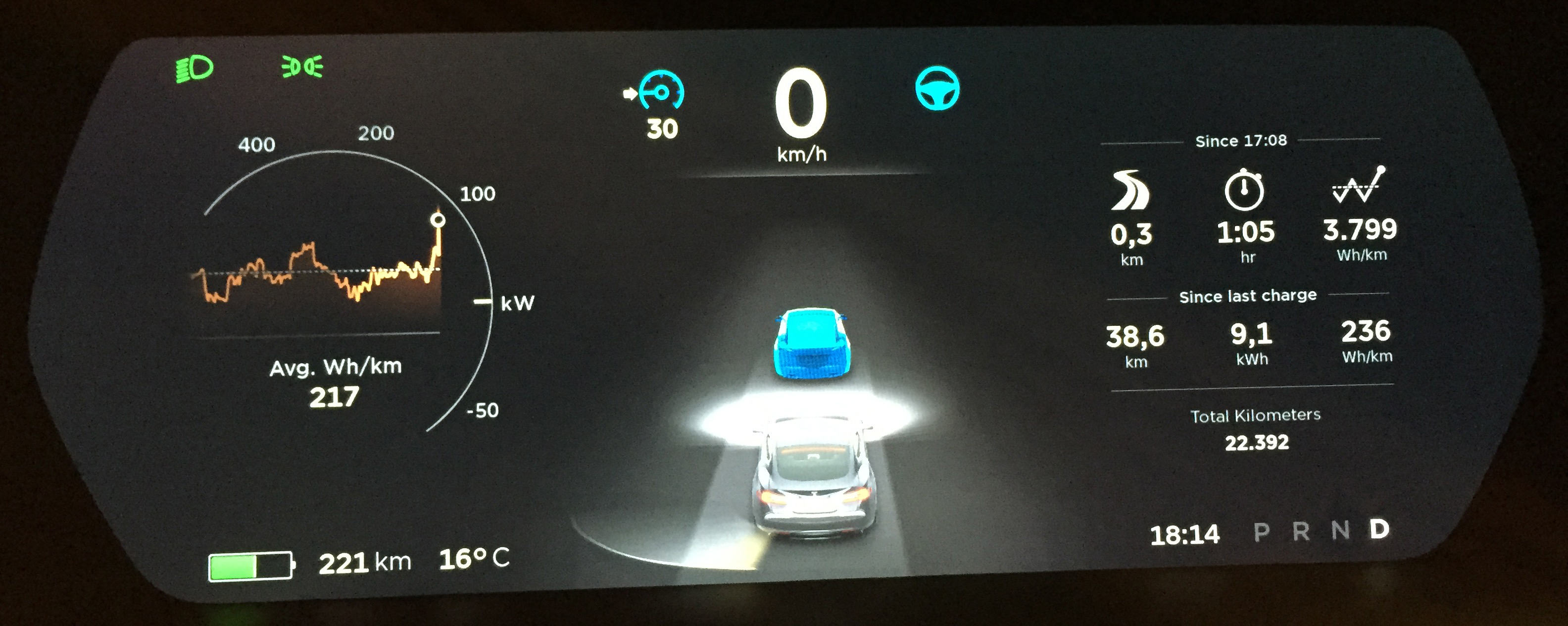
AutoPilot following the car in front of me during a huge traffic jam
And then we come to “la pièce de résistance”: AutoSteer. This is the killer feature that puts Tesla in the lead of moving towards autonomous vehicles. Before I go any further I should clarify that this feature (with the combination of the others) is NOT auntonomous driving! The system still needs clear supervision by the driver, even do it can handle a lot of situations.
So if you have the capability in your own Tesla, please don’t do stupid things like climbing in the back seat or reading the newspaper while driving! And if you do feel the uncontrollable urge to do so, don’t film it and put it on YouTube. If too many people vbehave like this, gioverments will put a ban on AutoPilot and you will be punishing all of us other drivers by taking it away from us who use it wisely. Just don’t do it!
Disclaimer: This doesn’t mean that I haven’t tested the system limits. I’m a curious guy like any other, but when I did, it was under controlled environments, on empty roads, with hands hovering millimeters above the steering wheel, ready to take over in an instant. You don’t need to climb in the back seat to prove the car drives on its own, you know. Also, the feedback I had from my tests, I clearly wrote them down with example situations where it did and did not perform as expected and sent it to Tesla support for them to use it to improve the system.
But enough ranting. How good is it in real life? It copes with most situations rather well. The system claerly needs well marked lanes to operate efficiently and it does work best on highways (for which it is primarily designed). It does work on major roads and some smaller back roads, but having no lines and oncoming traffic on a road with single lines in each direction is a big “no-no” for AutoSteer.
On the other hand, when used as advertised and as designed, the system performs really well and helps your drive to work or your road trip to be more relaxing, taking some of the more stressful parts off your hands. This leaves you with more time to be more attentive to your surroundings, or to enjoy the scenery, or even be more attentive to your fellow passengers (without loosing sight of traffic of course).
Talking about road trips, as I mentiond in the beginning, I went on a road trip this weekend. First stop was Amsterdam. While the car is phenomenal to drive, I wanted to conduct an experiment. So as soon as I entered the highway I enabled AutoPilot and didn’t need to touch the steering wheel or pedals for the next 180 km, until I had to exit the highway in Amsterdam!
Next stop was in Stuttgart, a 600 km away and I wanted to use AutoPilot as much as possible. That meant using it in huge traffic jams, where the car follows the car in front of you due to lack of good sight on the lane markings and the fact that you’re driving below 30 kph. It also meant driving on an almost empty Autobahn at 150kph (maximum speed for AutoPilot) as a passenger in the driver’s seat. This is rather unnerving and I wouldn’t call it relaxing at all, but as an experiment and party trick it is awesome!
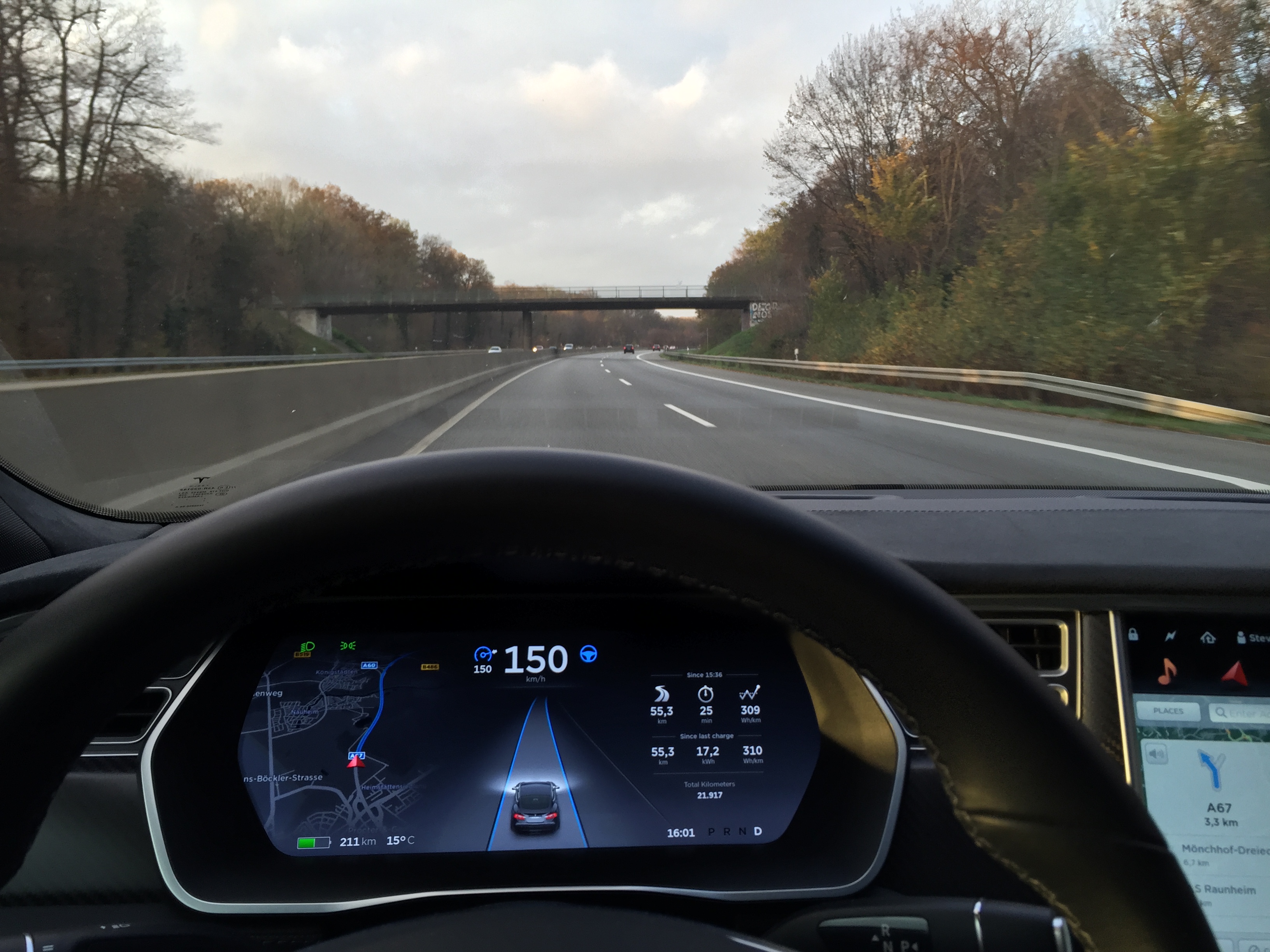
Tesla AutoPilot at 150kph on the Autobahn
And it also meant seeing how the system reacts to road works and shifting lane markings. Ther the system still needs a lot of work. It tries to follow the new markings, but as soon as you try to cross the old markings, the car panics and basically doesn’t know what to do. This is the point where you definitely need to take control over the car. Otherwise you will end up in a very bad situation.
Driving in the rain doesn’t pose that much of a problem, as long as the rain isn’t too heavy and the car can still see the lane markings clearly. I’ve had section where I was in complete darkness on wet roads with light rain and the system kept working as if it were a bright and sunny day. Both with oncoming traffic shining their light on the wet roads (even on divided highways) the camera couldn’t see the markings anymore and the system prompted me to take control of the car, which I did.
Conclusion
In the end I drove about 1600 km on this trip and of those, at least 1000km were on Autopilot, meaning I let the car drive me. There were only a handfull of occasions where the car prompted me to take control or where it paniced and urged me to take control. All other situations (curves, exits, lane splits) were either handled beautifully by the car or I noticed up front the car would have trouble navigating the situation, so I got ready and took control the instant I sensed it could react incorrectly. My respect for and understanding of the system has grown exponentially during this trip.
All in all, AutoPilot is a fabulous system and keeping in mind this is still considered beta, I cannot wait until we get the final version downloaded to our cars of the future. I applaud Tesla for taking this brave step towards full autonomy and for not waiting until we get the complete autonomous car, like Google tries to do. Instead, the have a step-by-step appoach and that means that we can already benefit of a lot of the coolness, whil at the same time Tesla gets about 1 million miles of data back from the car to keep improving the system. That sounds like a win-win situation to me!
Should this article persuade you to take an interest in buying or leasing a Tesla, feel free to use my referral code (or to give my code to somebody you know) so you can save $1000/€1000 on your new car: http://ts.la/steven1007